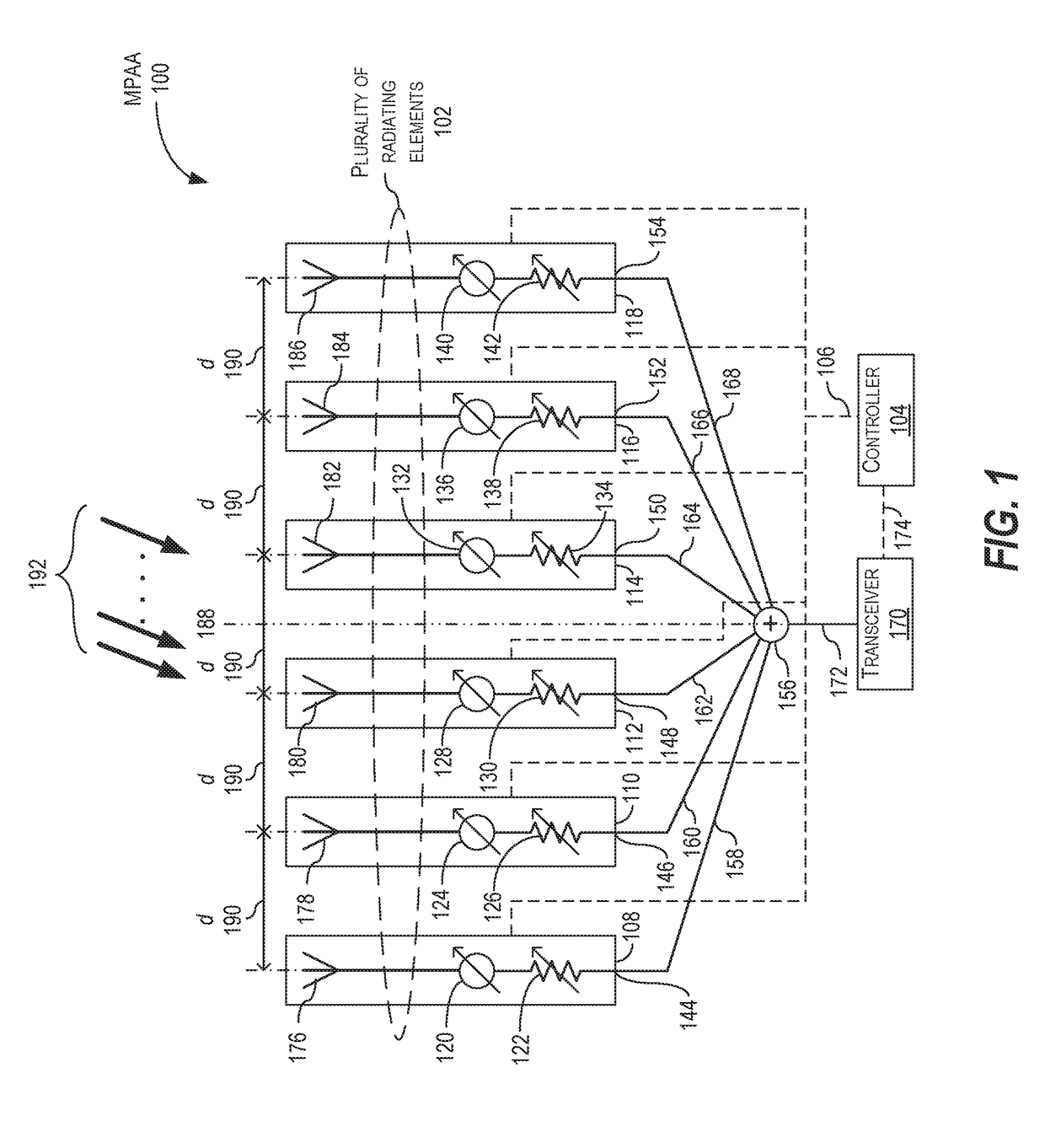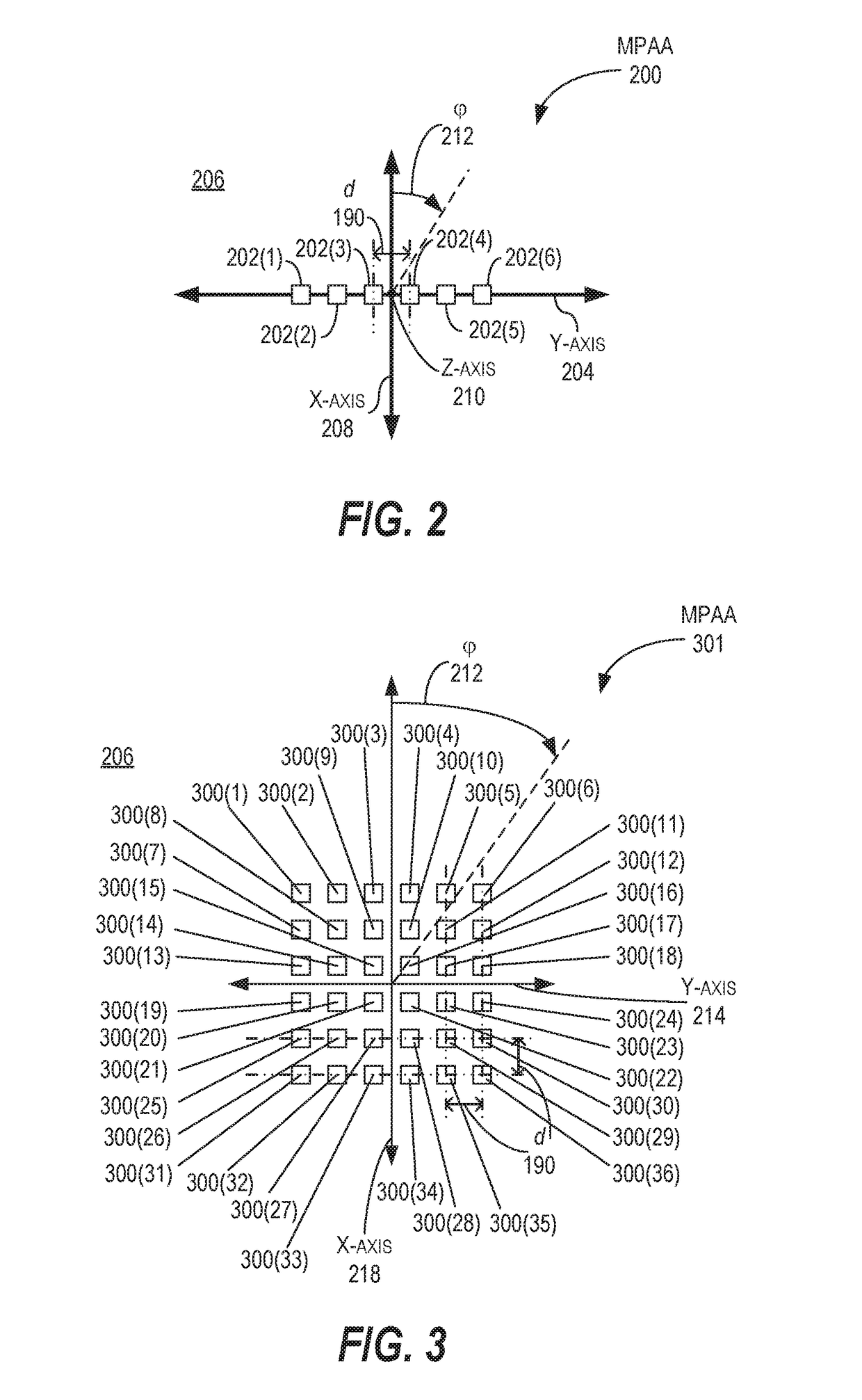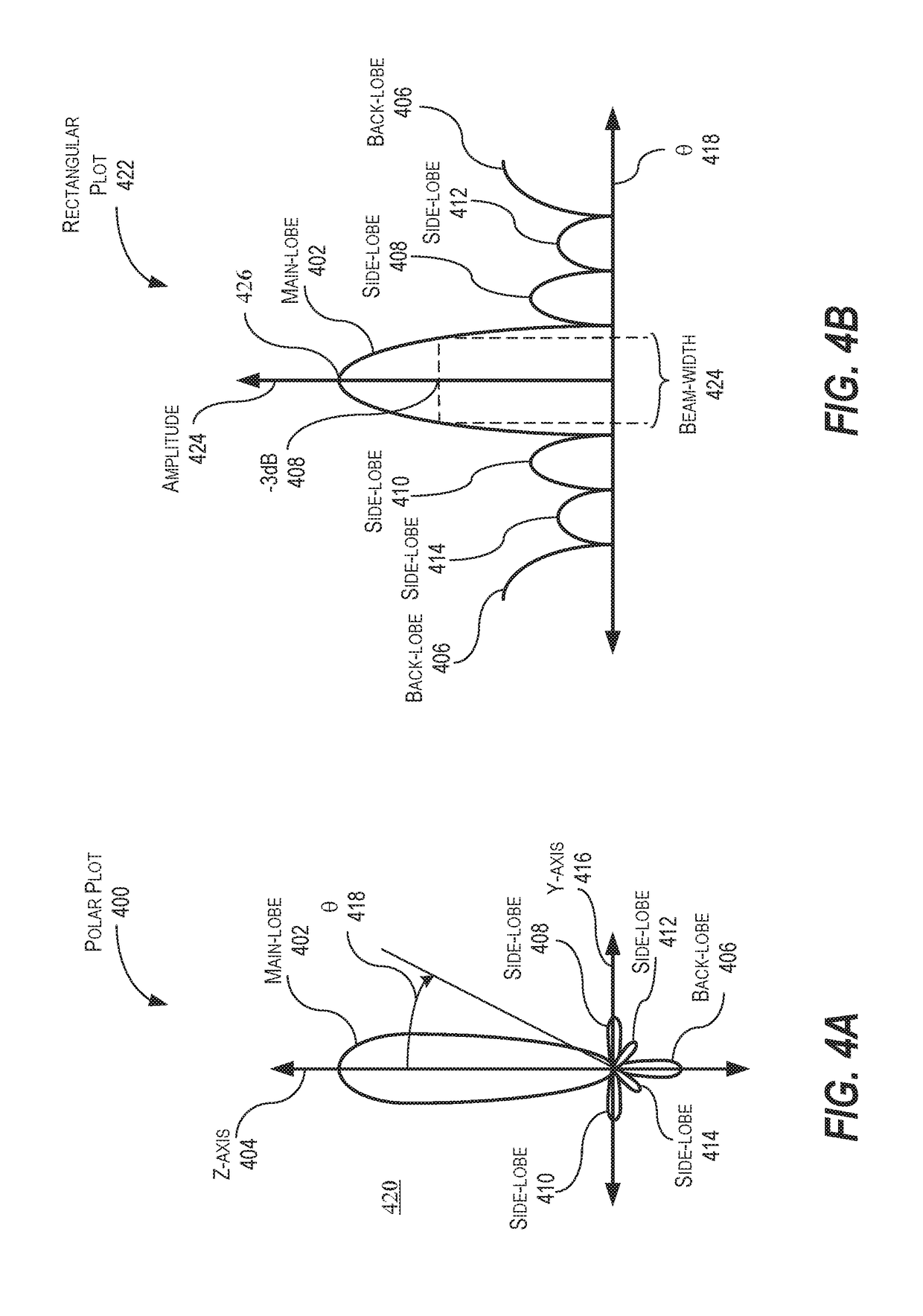Wideband beam broadening for phased array antenna systems
a phased array antenna and wideband beam technology, applied in the field of phased array antennas, can solve the problems of spoiling techniques still not providing wide beams for wideband systems to solve these problems, and the main beam becomes too narrow for efficient implementation of some types of communication or radar applications, and the frame time becomes prohibitively long
- Summary
- Abstract
- Description
- Claims
- Application Information
AI Technical Summary
Benefits of technology
Problems solved by technology
Method used
Image
Examples
Embodiment Construction
[0025]Disclosed is a multi-mode phased array antenna (“MPAA”). The MPAA has at least two modes of operation, where a first mode of operation produces a first main-beam and a second mode of operation produces a second beam. The MPAA includes a plurality of radiating elements arranged as an array of radiating elements and a controller in signal communication with the plurality of radiating elements. The controller is configured to excite the plurality of radiating elements to produce a first radiation pattern having the first main-beam in the first mode of operation and a second radiation pattern having the second beam in the second mode of operation. The second beam is wider than the first main-beam and the second radiation pattern is similar to a radiation pattern for a single radiating element of the plurality of radiating elements. The controller is also configured to switch between at least the first mode of operation and the second mode of operation.
[0026]In an example of operat...
PUM
 Login to View More
Login to View More Abstract
Description
Claims
Application Information
 Login to View More
Login to View More - R&D
- Intellectual Property
- Life Sciences
- Materials
- Tech Scout
- Unparalleled Data Quality
- Higher Quality Content
- 60% Fewer Hallucinations
Browse by: Latest US Patents, China's latest patents, Technical Efficacy Thesaurus, Application Domain, Technology Topic, Popular Technical Reports.
© 2025 PatSnap. All rights reserved.Legal|Privacy policy|Modern Slavery Act Transparency Statement|Sitemap|About US| Contact US: help@patsnap.com



